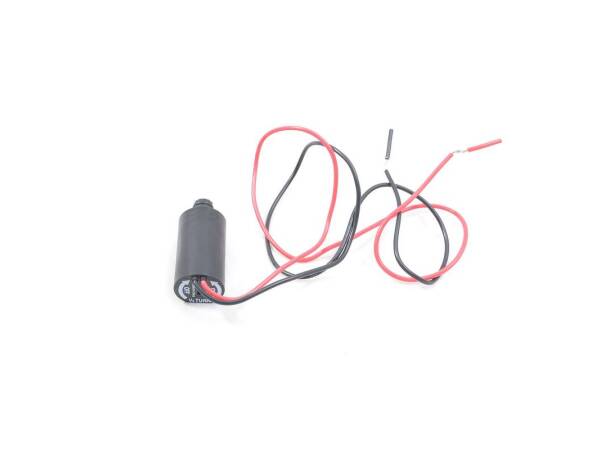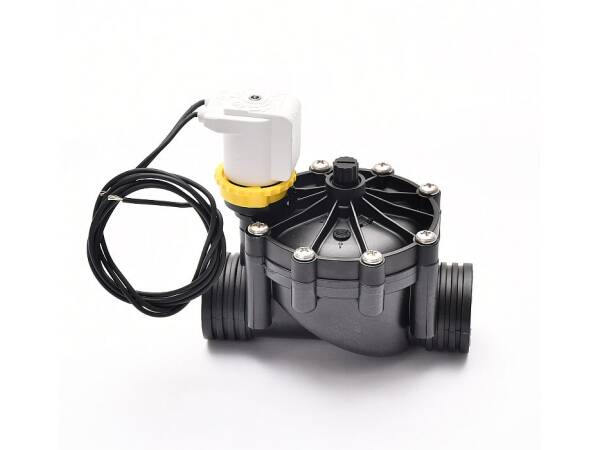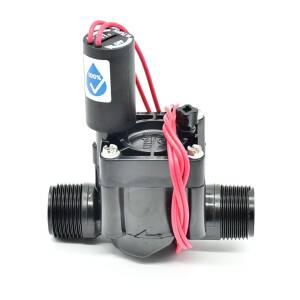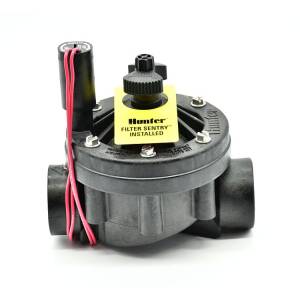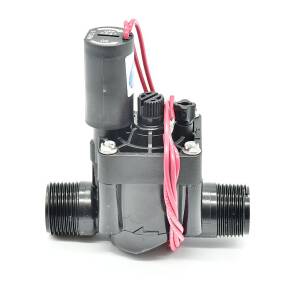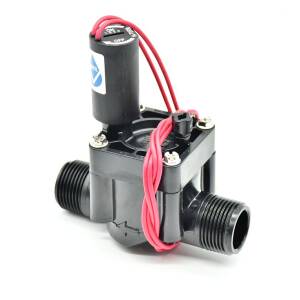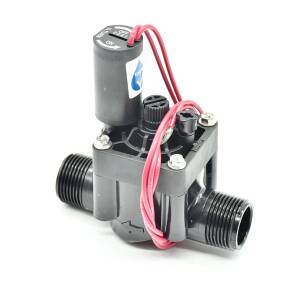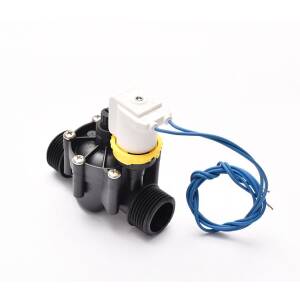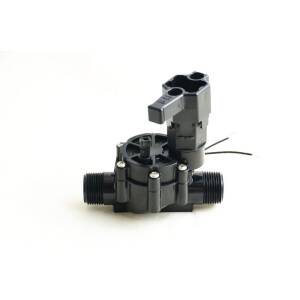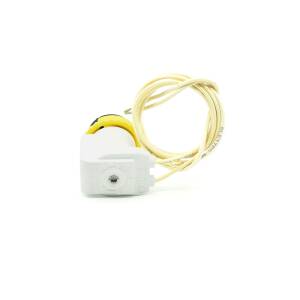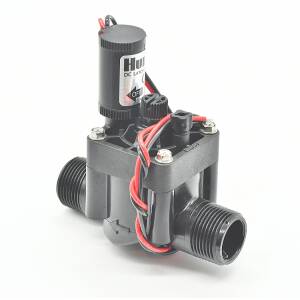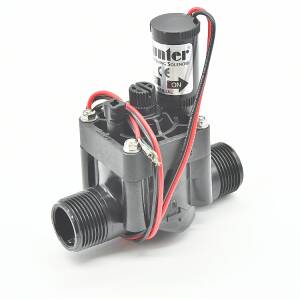Hunter PGV, ICV, IBV solenoid valve - pressure resistant irrigation valve
A Hunter PGV series solenoid valve, for example, is pressure-resistant up to a maximum operating pressure of 10 bar (PN 10). There are also professional versions with a much more robust design made of plastic reinforced with fiberglass (ICV) or even brass valve bodies (IBV).
Our expert tip: the solenoid valve thread
Solenoid valves with male thread are the preferred option due to their higher stability, since threaded fittings can mounted. Be cautions with valves with female threads - under no circumstances should a metal male thread be fitted into a plastic female thread.
The correct operating voltage for an electric water valve
If the voltage supply is direct current (DC), the AC coils may heat up considerably. The wrong current can cause damage to the solenoid coil. Therefore, there are special DV solenoid valves (2-way) that operate with nominal voltage 12 VDC or 24 VDC. DC actuators are also often used in Smart Home systems. With this option, the use of an additional transformer may no longer be necessary and the relay can switch through directly. With this coil type, you can then activate the valve distribution directly electrically with the DC actuator of your Smart Home.
Our Plug&Rain® system offeres you completely pre-assembled valve boxes plus the matching control unit. Further information, sets and required parts can be found here.
Flow control on the solenoid valve
The Hunter solenoid valves without flow control are marked e.g. Hunter PGV 100 MM, the models with flow control are marked Hunter PGV 101 MM. The flow control allows you to regulate the opening of the membrane and thus adjust the amount of water flowing through.
High tank + electric ball valve = 2-way solenoid valve directly controlled
With very low pipe pressure (e.g. high tank), the pressure may not be sufficient to open the membrane. This is particularly true if there is no electricity in the garden and irrigation is to be carried out from high tanks. In this case, the electric valve should be directly or force-controlled or have a servo-controlled drive. Directly controlled valves are usually available as 9V versions. For servo-controlled valves, check which control system can be used with the respective valve.
Plan your irrigation system with our free planning tool - the DVS Irrigation Planner. All the parts you need for your garden irrigation system can be ordered online and get delivered directly to your home.
Frequently Asked Questions (FAQs)
The size of the solenoid valve depends on the size of your irrigation system. We offer different sizes to suit your needs.
The solenoid valve is installed in the main water line of the irrigation system and controls the water flow to the individual irrigation zones.
Solenoid valves are particularly durable and reliable. They can also be used at low pressures and are therefore ideal for irrigation systems.
Regularly check the connections and seals of the solenoid valve for damage and clean it of dirt and deposits if necessary.
Yes, we offer a wide range of accessories such as adapters, filters and spare parts for solenoid valves to optimally equip your irrigation system.
What are solenoid valves?
Solenoid valves are electric water valves that have been specially developed for garden irrigation. They serve as control elements for irrigation and enable efficient and individual adjustment to the needs of the garden. The valves are controlled by an irrigation controller and are interchangeable. They work with 24 volt alternating current and are therefore easy to install.
Advantages of solenoid valves
Solenoid valves offer several advantages for garden irrigation. They enable precise flow regulation, which leads to efficient water usage. They are also durable and low-maintenance. Thanks to their interchangeability, they can be used flexibly and can be easily replaced if necessary. They can also be combined with other irrigation systems, allowing them to be individually adapted to the needs of the garden.
Tips for using solenoid valves
To ensure the full functionality of the solenoid valves, it is important that they are used in combination with an irrigation controller. This enables automatic control of the irrigation and ensures efficient use of the water. It is also advisable to check the valves regularly for dirt and clean them if necessary. When combining with other irrigation systems, it is important to adjust the flow rate of the valves accordingly to ensure even irrigation.
 Free Online Irrigation-Planner
Free Online Irrigation-Planner




